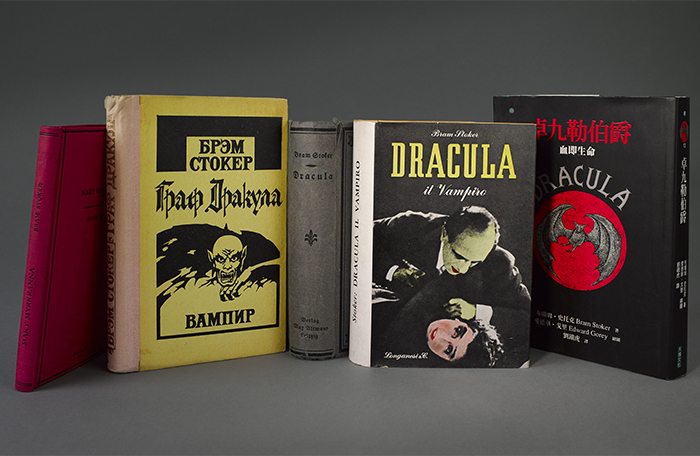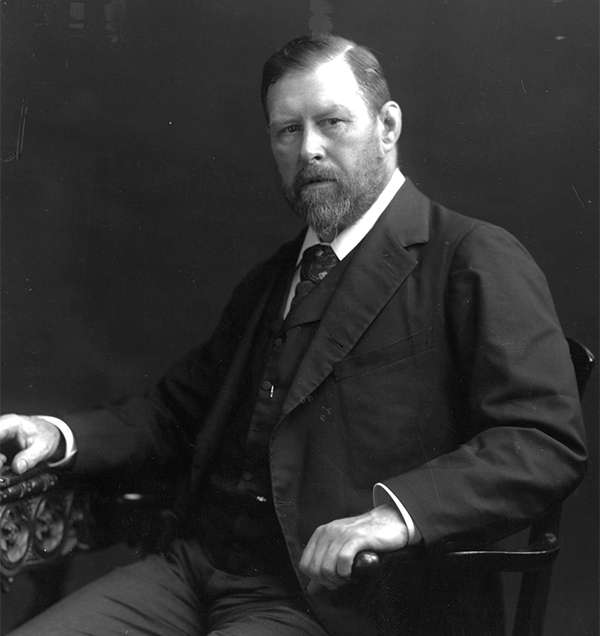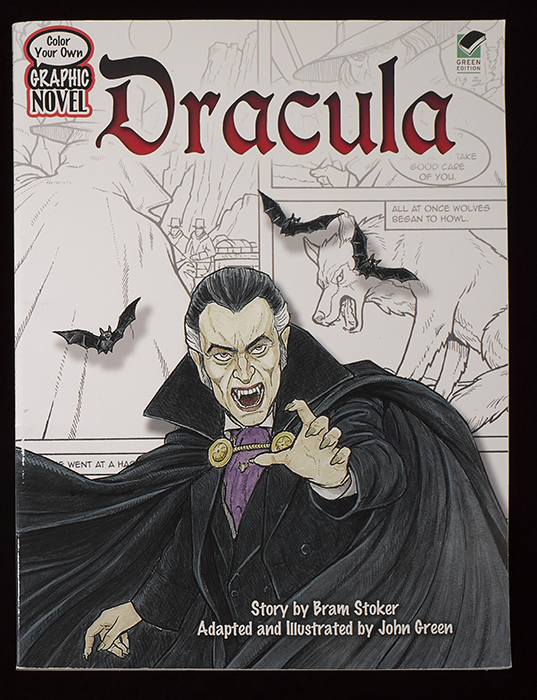Click here to read the feature article “Vampire in the Library: Bram Stoker collection celebrates his literary immortality at Emory’s Rose Library”
Emory University’s Stuart A. Rose Manuscript, Archives and Rare Book Library has acquired what some are describing as the world’s most comprehensive collection of rare materials highlighting the work of Bram Stoker, 19th century Irish author best known for “Dracula.”
The Stoker collection is extensive containing nearly 4,000 items including approximately 1,500 books, inscribed association copies, correspondence, manuscripts, playbills, first edition translations of “Dracula” including Japanese, French, Gaelic and Icelandic, and other ephemera and photographs. The collection also includes artwork, movie posters, books and other materials on spirits and vampirism that Stoker was known to have used as research for “Dracula.”
“This is a stunning collection of 19th century writing by a pivotal author that transcends the horror genre,” says University Librarian and Dean Yolanda Cooper. “Bram Stoker’s talent, evidenced by the longevity of ‘Dracula’ and the many variations represented in this collection, is astounding. We’re proud that Rose Library is now the keeper of this collection, and so pleased to make these materials available to students, faculty and researchers at Emory and the world over.”
Rose Library obtained the collection from private collector John Moore of Dublin, Ireland from a book dealer in Galway.

The collection includes major translations of “Dracula” into Romanian, Russian, German, Italian, and Mandarin Chinese.
“Moore spent about 40 years tracking down every authentic rare book and document by and about Stoker and ‘Dracula’ that he could find,” says Beth Shoemaker, Rose Library’s rare book librarian. “International interest in the collection is strong, and although Moore has exhibited it and allowed a select number of scholars and authors under contract to visit the materials in his home, Moore felt it was time to place this collection with a major academic library that has the ability to provide broader accessibility.”
Collection uses in the classroom
Jennifer Gunter King, director of the Rose Library, says students and faculty in history, English and creative writing, film and media, theater studies, Irish Studies, sociology and other fields will benefit from researching in the Stoker collection.
“There is such a wealth of information and inspiration in the Bram Stoker collection that call to many interdisciplinary fields,” notes King, who worked for more than three years to spearhead this acquisition. “I’m excited to see all the different kinds of research that will come out of the use of this collection for many years to come.”
The enduring appeal of “Dracula” can be attributed in part to the themes running through it that still resonate today. These include the battle between good and evil, science and religion, female innocence and sexual assertiveness, madness and reality, and modern knowledge and the “old” ways, among others. Items in the Stoker collection will give students, faculty and researchers many avenues to explore.
“The hope is that students will engage with all parts of the collection, some of which feature the famous vampire and others that provide insight into the significant literary and dramatic worlds Stoker inhabited,” says English professor Sheila Cavanagh, who will co-teach a class based on the collection in the spring. “In ‘Dracula,’ Stoker clearly created a figure that resonates deeply with succeeding generations. Our students will have the opportunity to explore the dark appeal of this character as well as innumerable other topics embedded in the archive.”
Michele Schreiber, associate professor and chair of the Department of Film and Media, says the Stoker collection will provide exciting research value for students and faculty in her department. Classes on the horror genre are frequently offered, as are courses on film adaptation.
“We definitely like to emphasize primary research in many of our classes, so to have those materials accessible to students is really a phenomenal opportunity,” Schreiber explains. “The same applies to faculty, particularly for those working on adaptation or in the horror genre. When you’re doing any kind of archival research, to see the original materials and see where the ideas came from adds another layer to any sort of research project.”
Benjamin Kruger-Robbins, visiting associate professor of film and media, is putting together a Spring 2022 class on horror media for upper-division undergraduates that will draw on the Stoker collection. The class will have a queer and camp focus to it, he says.
Cavanagh and Joonna Trapp, senior lecturer in English and director of the Emory Writing Program, will co-teach an English 700 level course in Spring 2022 tentatively titled “The Monster in the Library: The Stoker Archives and Dracula,” which will focus on the Bram Stoker collection. Students will study the writer’s life as he wrote “Dracula” while working at the Lyceum Theatre, and how the novel grew to have a wide influence on literacy, cinema and popular culture.
Celebrating the collection
Emory will host a physical pop-up exhibit Oct. 19 to Nov. 21 on the second floor of the Woodruff Library featuring Bram Stoker materials highlighting the significance of the acquisition, which will include a first edition of “Dracula.”
For more details on the collection, visit the John Moore Bram Stoker Collection finding aid.


